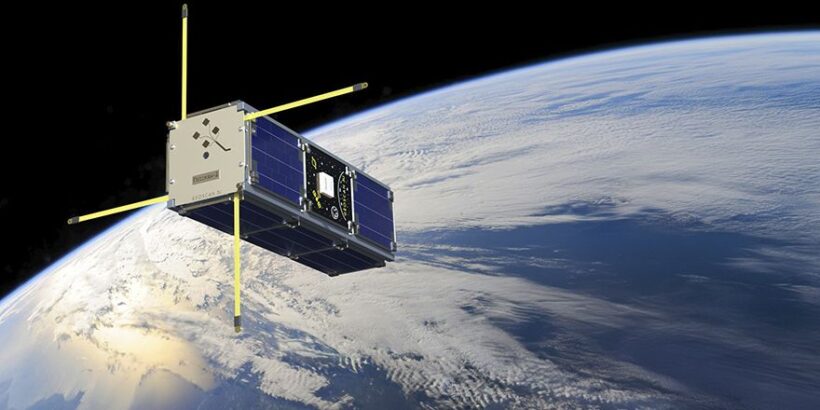In recent years, small satellites—often called smallsats or CubeSats—have revolutionized the global space industry by making access to space more affordable and flexible. These compact spacecraft are increasingly used for a wide range of applications, including Earth observation, communications, scientific research, and now, airspace monitoring. Their lower development and launch costs, combined with rapid deployment capabilities, have enabled both governmental and private organizations to pursue innovative space-based solutions.
The integration of small satellites into airspace surveillance networks represents a major step forward in aviation safety and efficiency. By providing real-time data from orbits that cover vast and previously inaccessible regions, smallsats help fill gaps in traditional ground-based infrastructure. This global trend highlights the growing importance of small satellite technology in meeting the challenges of modern aviation and beyond.
The Geoscan-2 satellite recently received its first aircraft position data using Automatic Dependent Surveillance-Broadcast (ADS-B) technology. During its initial operational day, the spacecraft collected over 850 messages from commercial aircraft within its radio coverage area during a single orbit, accumulating more than 1,700 validated messages across two orbits. This achievement was announced by Geoscan Group’s press service.
Automatic Dependent Surveillance–Broadcast (ADS-B) is a modern air traffic surveillance technology that enables aircraft to broadcast their position, velocity, and other flight data in real time. This information is transmitted automatically via onboard avionics and can be received by ground stations, satellites, and other aircraft equipped with ADS-B receivers. The technology greatly enhances situational awareness for air traffic controllers and pilots, contributing to safer and more efficient airspace management.
Unlike traditional radar-based systems, ADS-B relies on satellite navigation and onboard sensors to determine an aircraft’s precise location. The data is then broadcast at regular intervals, allowing for continuous tracking even in remote or oceanic regions where ground-based radar coverage is limited or unavailable. As a result, ADS-B has become a key component of next-generation air traffic management systems worldwide.
The company explained that the satellite operated in an unoriented flight configuration during signal reception—meaning it did not have precise attitude control relative to Earth or celestial references. This condition significantly complicates antenna pointing and sensor operations. Despite these challenges, Geoscan-2 maintained normal performance and collected high-quality data, demonstrating the receiver’s robust effectiveness.
“The initial activation delivered excellent results. This confirms the viability of integrating ADS-B receivers into small satellites and allows us to proceed to the next phase—conducting scalability experiments and integrating the technology into existing Air Traffic Management (ATM) systems,” said Alexander Khokhlov, Head of Small Satellite Projects at Geoscan Group.
The project’s innovation lies in its successful integration of ADS-B technology aboard a Russian-manufactured small satellite platform. Unlike existing global systems that typically rely on ground-based receivers or larger satellites with substantial power resources, Geoscan-2 has proven that effective signal reception and processing can be achieved using a compact platform with limited resources and variable orientation capabilities. This breakthrough opens the door for comprehensive ADS-B integration into Air Traffic Control (ATC) systems, extending surveillance coverage to regions lacking ground infrastructure, including monitoring of Unmanned Aerial Vehicles (UAVs).
Geoscan-2 was launched into orbit on July 25, 2025, as a secondary payload aboard the Soyuz-2.1b/Fregat mission carrying the Ionosfera-M No. 3-4 spacecraft. Prior to commencing payload operations, the satellite completed comprehensive flight acceptance testing, validating all spacecraft platform systems: power, communications, command and control, navigation, and attitude determination. Following successful test completion, the spacecraft was certified ready for ADS-B receiver operations, according to Geoscan’s press service.
The launch simultaneously deployed eight small satellites based on the Geoscan 3U platform and Russia’s first CubeSat, InnoSat16. This deployment lays the foundation for comprehensive development of space-based communications and Earth remote sensing services.
Alexander Khokhlov confirmed to the Aviation Russia website that the satellites were deployed into a near-polar sun-synchronous orbit at an inclination of 97.4 degrees and approximately 500 kilometers altitude. According to Khokhlov, the company is currently conducting initial experiments. Following completion and analysis of future user requirements, the company will determine the optimal constellation size, which will eventually be expanded to provide comprehensive coverage of Russian territory.
“Even a single satellite in near-polar orbit inherently covers the entire Earth’s surface through the combination of orbital motion and planetary rotation. However, at any given moment, it only operates over a portion of Earth’s surface. Our plans include deploying a satellite constellation sufficient to meet Russian users’ operational requirements,” Khokhlov explained.
The Geoscan-2 project marks a significant technological advancement in applying small satellite technology to enhance airspace monitoring capabilities and ensure aviation safety in today’s complex airspace environment.


